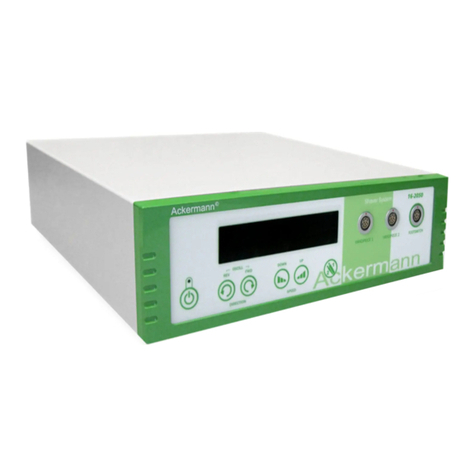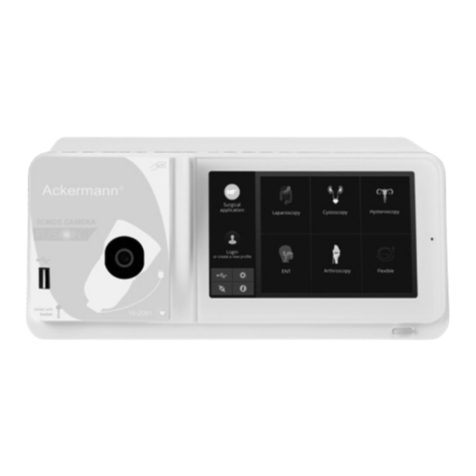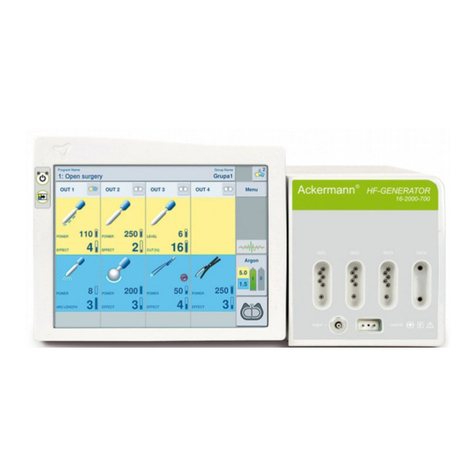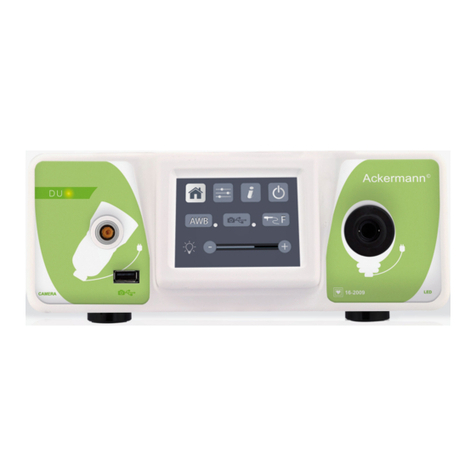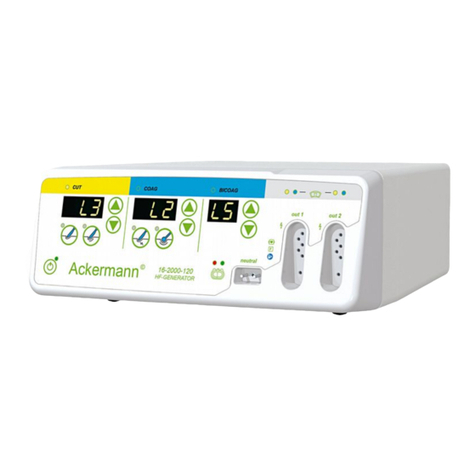
PAGE: 5// 40
User Manual 16-2092 | Revision 02/21 by
Ackermann
SAFETY MEASURES FOR SETUP AND OPERATION
For proper operation of the unit and to avoid possible hazards you observe the following precautions:
• Only place the unit on a base secured against tipping.
• The device may only be used in rooms that are installed according to national valid standards. The
environmental temperature and the relative humidity must correspond to the values listed above (see
storage and operation conditions). If the instrument was exposed to extreme temperatures during transport
it should be acclimatized to room temperature prior to operation.
• The plug-in device for a potential equalization should be properly connected. The control unit is basically
grounded via the 3-pin type F plug, if it is connected to a grounded power cord as prescribed. When operating
the device in rooms of application group 2 according to DIN VDE 0100 it is essential that the device is connected
to the stationary potential equalization of the room or the equipment truck by an appropriate cable. The
device has an appropriate plug-in connector (according to DIN 42801).
• Use only the power cord provided for the power connection.
• This device may only be connected to a supply network with a protective conductor
• Check if the local mains voltage corresponds to the voltage range of the instrument!
• The patient and the following parts must not be touched at the same time:
• Touchable contacts of connectors
• Contacts of fuse holders that are accessible during the replacement of fuses
• Install the instrument in a way that there is always a suitable flow of fresh air.
• Operating the unit in explosion-prone areas is prohibited.
• The safe operation of the device is guaranteed up to a height of 3000m.
• The connection of two or more devices can lead to a higher leakage current.
• Electro-medical devices are subject to specific precautions concerning electromagnetic compatibility
(EMC). Observe the following information prior to operation:
• Mobile communication devices can interfere with the function of other electronic devices. Switch
off your mobile phone or similar devices close to medical devices or medical facilities.
• Use solely the enclosed cables and original spare parts (see chapter Unpacking / Standard
equipment).The use of other cables and spare parts may lead to a reduced interference resistance
and to an increased emitted interference.
• If the present medical device is stacked or placed directly next to other electronic devices the
whole configuration and the present medical device has to be tested for correct function.
• The device must not be operated near flammable gases or flammable substances, and within the direct
patient environment.






